Eco-leather is a term used to describe a variety of leathers made from sustainable materials and without producing any toxic substances in the production process. While there are many different types of eco-leather, they all have one common goal: to reduce the environmental impact of the leather industry. In this guide, we will answer some of the most common questions about eco-leather. We will discuss what makes eco-leather sustainable, and we will discuss the various variations of this product.
History of Eco-Leather
Have you ever wondered what eco-leather is? If so, you’re not alone! Eco-leather is a type of leather that is made with sustainable methods and materials. It is also sometimes called “vegan leather” because it does not use any animal products. It is made from recycled or natural materials instead of animal skin. Eco-leather can be just as durable and high-quality as traditional leather, but it has a smaller environmental impact.
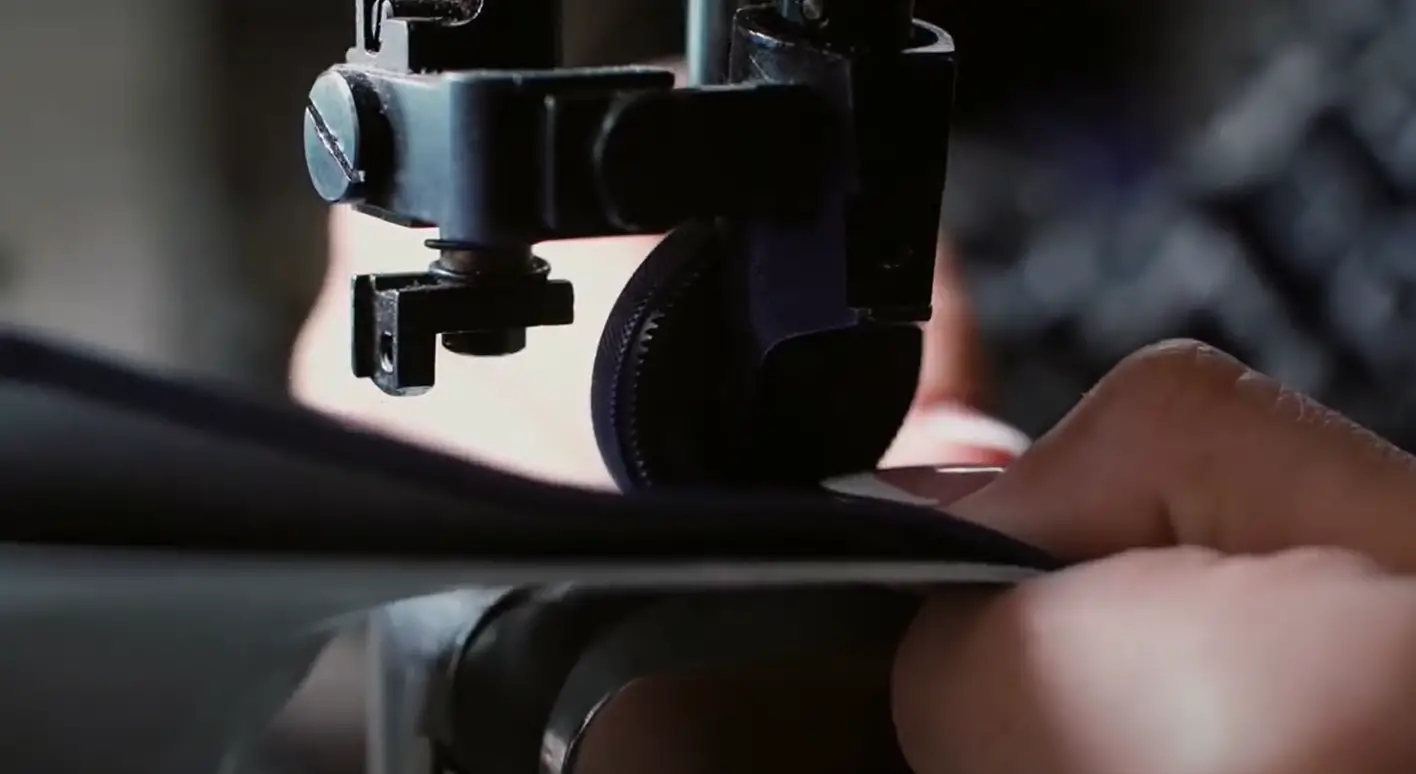
Some people consider old, yet recycled animal leather to be eco-friendly. However, the leather tanning process often contains harmful chemicals. These chemicals can pollute the environment and potentially cause health problems for workers and nearby residents. Therefore, many people consider only plant-based or synthetic materials to be truly eco-friendly.
Eco-leather is also free of harmful chemicals and pollutants, making it a safer choice for both the environment and your health. In recent years, there has been an increase in the use of eco-leather in the fashion industry. Many high-end designers are now using eco-leather to create luxury handbags, shoes, and clothing. [2]
Is Eco-Leather and Synthetic Leather the Same Thing?
Eco-leather and synthetic leather are not the same thing, but they are often confused. Synthetic leather is made from plastic materials, such as polyurethane or PVC. It is a cheaper alternative to traditional leather, but it is not as durable. Eco-leather, on the other hand, is made from sustainable materials like recycled plastics or plant-based fibers. [2]
While synthetic leather may be cheaper, it is not as environmentally friendly as eco-leather. Synthetic leather often contains harmful chemicals that can pollute the environment. It can also take centuries to break down in landfills. Eco-leather, on the other hand, is biodegradable and does not contain any harmful chemicals. [3]
Tanning also matters when it comes to environmental friendliness. Synthetic leather is often treated with harmful chemicals during the tanning process. These chemicals can pollute the environment and potentially cause health problems for workers and nearby residents. Eco-leather, on the other hand, is usually vegetable-tanned or metal-free. This means that no harmful chemicals are used in the tanning process. [1]
Eco-leather also has a more natural look and feel than synthetic leather. Many people prefer eco-leather because it looks and feels more like traditional leather. It is also a more sustainable choice for the environment.
What is Eco-Leather Made of?
Eco-leather can be made from a variety of sustainable materials, including bamboo, cork, pineapple leaves, and even recycled plastic! This type of leather is often more environmentally friendly than traditional leather, as it requires fewer chemicals and less energy to produce. Let’s take a look at different types of eco-leather!
Piñatex leather
Piñatex is a type of eco-leather made from the fiber of the pineapple leaves. It is a sustainable alternative to traditional leather, as it does not require any animal products or chemicals. One of the advantages of Piñatex is limited use of external resources in its production, such as water, pesticides and heavy metallic salts used in chrome tanning processes.
Piñatex is strong and durable, yet soft and flexible, making it an ideal material for a variety of applications. It is often used to create handbags, shoes, and clothing. [4]
While Piñatex is a great alternative to traditional leather, it does have some drawbacks. One downside is that it is non-biodegradable and uses petroleum-based resins in its production, which are harmful to the environment. [5] It’s also not as breathable as traditional leather, so it may not be the best choice for summertime use. Additionally, Piñatex can fade and dry out over time as opposed to the traditional leather, which can last for decades. [6]
Recycled plastic
It may be surprising to hear, but recycled plastic bottles can be turned into eco-leather! This type of leather is made by recycling post-consumer plastic waste, such as water bottles or food packaging. The recycled plastic is then processed into a nonwoven fabric that can be used to create eco-leather.
This type of leather has a few advantages over traditional leather. First, it is more environmentally friendly, as it reduces the amount of plastic waste in landfills. Second, it is more durable and longer lasting than traditional leather. And third, it is softer and more flexible than traditional leather, making it more comfortable to wear.
However, there are some drawbacks to recycled plastic eco-leather. One downside is that it is not as breathable as other types of eco-leather, so it may not be the best choice for summertime use. [7]
Cork
Cork leather is another sustainable alternative to traditional leather. Cork is derived from the bark of cork oak trees, which are native to the Mediterranean region. Cork is a very durable material that is also water-resistant. Cork leather is also biodegradable and compostable.
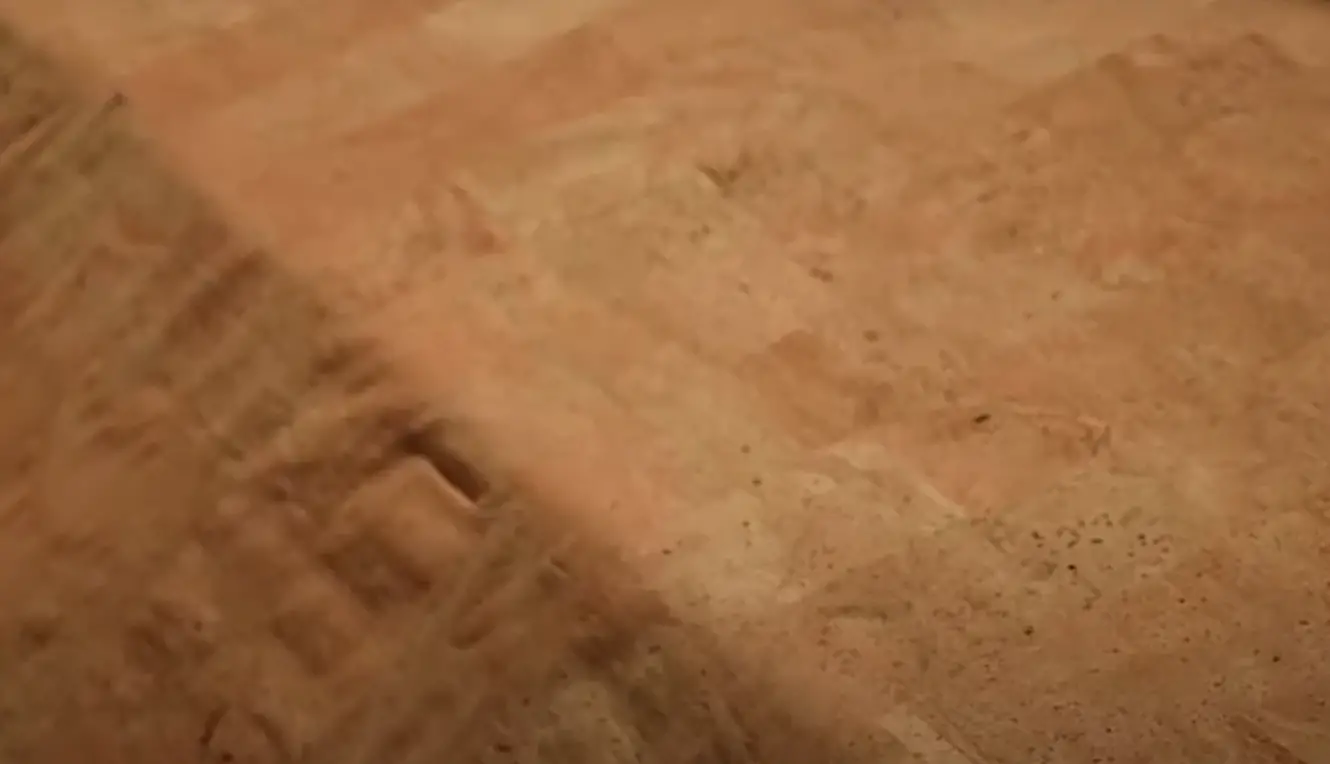
This material has been used for centuries, but it was only recently that it began to be used in mass production. Cork leather is often used to create handbags, shoes, and clothing.
While cork leather is a great alternative to traditional leather, it does have some drawbacks. One downside is that it is not as durable as traditional leather. Additionally, cork leather can be difficult to clean and care for. [8]
Bamboo
Bamboo is another sustainable option for eco-leather production. Bamboo is an extremely fast-growing plant that does not require any pesticides or fertilizers to grow. Bamboo products are also biodegradable, meaning they will break down naturally over time.
As you can see, all of these materials are sourced from renewable resources, which makes eco-leather a more sustainable option than traditional leather. [9]
Tanning Requirements for Eco-Leather
However, even if the leather was made from cruelty-free materials, it doesn’t mean that the tanning process was eco-friendly. Traditional leather tanning uses a variety of harmful chemicals, including chromium and arsenic. These chemicals can pollute the air and water, and they are also toxic to humans.
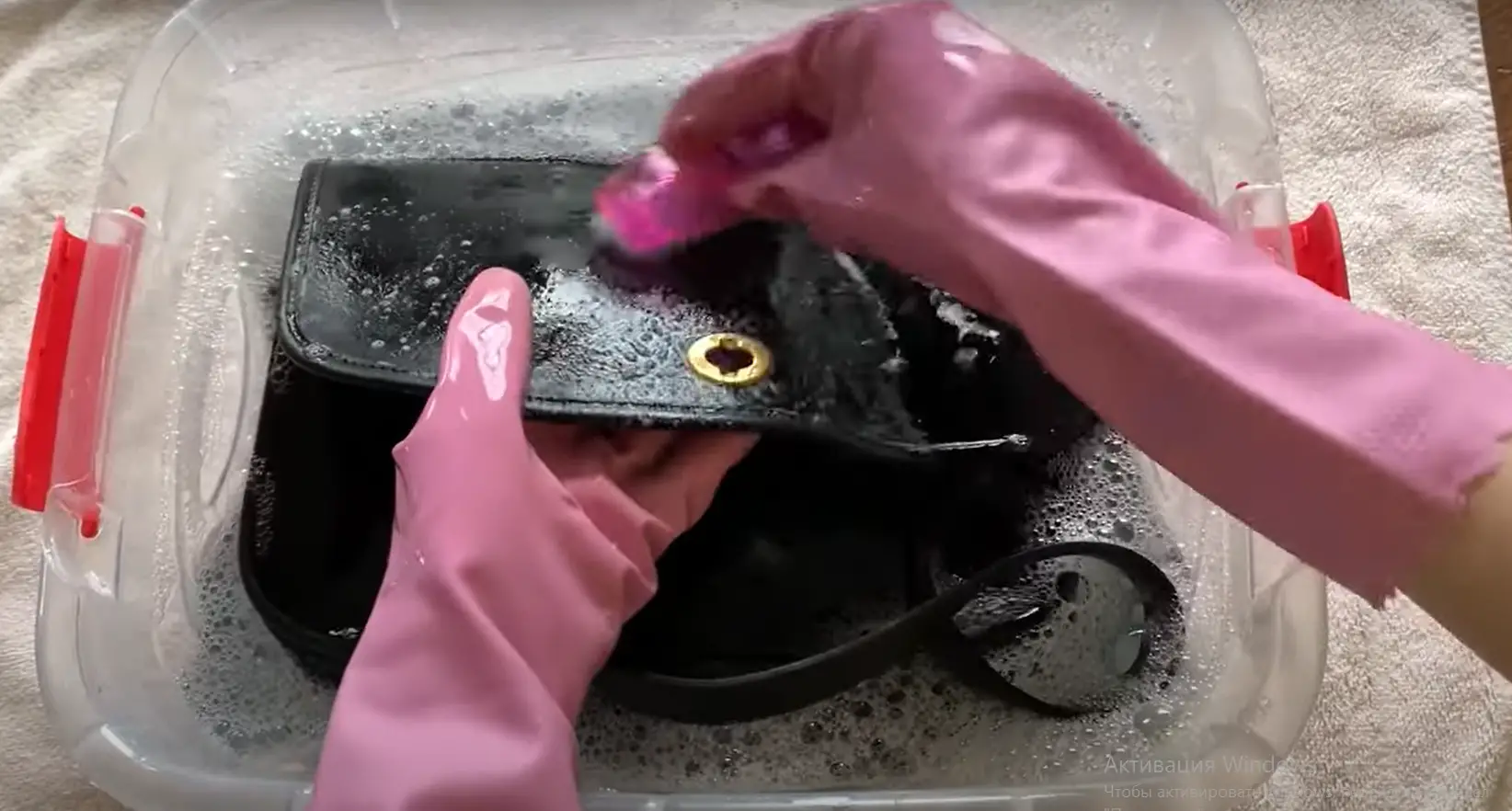
To be considered eco-leather, the tanning process must be free of these harmful chemicals. Instead, eco-leather is typically tanned using barks or other natural substances. This ensures that the leather is safe for both humans and the environment. [1]
Eco-leather is usually made using plant-based oils and waxes, which give it a natural water-resistant finish. This makes eco-leather an excellent choice for upholstery, shoes, and other items that come into contact with water on a regular basis.
Vegetable tanning
There are a few different ways to tan eco-leather, but the most common method is vegetable tanning. Vegetable-tanned eco-leather is made from natural tannins derived from plant matter. This type of leather is often used in high-end products because it looks better with age and develops a rich patina over time. It’s also more durable than other types of leather. [1]
However, vegetable-tanned eco-leather can be difficult to work with and requires special care. For example, it can’t get wet or it will shrink and deform. You also need to avoid exposure to sunlight or heat, as this will cause the leather to dry out and crack. [10]
While vegetable tanning is relatively eco-friendly, it does require the use of natural resources. As such, some companies are exploring alternative methods of tanning eco-leather. One such method is chrome-free tanning.
Chrome-free tanning
Chrome-free tanning is a process that uses metals other than chromium to tan the leather. This results in a leather that is free of harmful chemicals and safe for both humans and the environment. Chrome-free tanned eco-leather is often used in high-end products because it has a softer feel and a more natural look than other types of leather. [11]
It should be noted that not all chrome-free tanned eco-leather is created equal. Some brands use safer methods of chrome-free tanning than others.
One of the most common eco-friendly chrome-free tanning methods is glutaraldehyde tanning. This method uses a naturally occurring substance called glutaraldehyde, which is derived from oxidation of cyclopentene. Glutaraldehyde tanning is often used for medical applications.
This method of tanning is also very effective at preserving the leather, as it prevents bacteria and mold from growing on the surface of the material. Additionally, glutaraldehyde-tanned leather is very strong and durable. [12]
However, exposure to a high concentration of glutaraldehyde is toxic for human health and can lead to skin irritation, nausea and headache. This is dangerous for workers in the leather industry. [13]
Comparison of Leather and Eco-Leather

Eco-friendliness
The most obvious difference between regular leather and eco-leather is the eco-friendliness. As the name suggests, eco-leather is much friendlier to the environment than regular leather.
Eco-leather is made from sustainable materials, such as leaves, tree bark, and even recycled plastic bottles. Additionally, the tanning process used for eco-leather is free of harmful chemicals. This ensures that the final product is safe for humans, animals and the environment.
In contrast, traditional leather is made from animal skin, which isn’t a renewable resource. Furthermore, the tanning process used for traditional leather often uses harmful chemicals, which can pollute the air and water.
Eco-friendly leather is also cruelty-free, as it doesn’t require the slaughter of animals. Traditional leather, on the other hand, is made from the skin of cows, pigs, and other animals that are killed for their meat.
Eco-leather also has some other advantages over regular leather. For example, eco-leather is usually more durable and easier to care for than regular leather. Additionally, eco-leather often looks just as good as regular leather (if not better)!
In terms of sustainability, eco-leather is the clear winner. It is also free of harmful chemicals and is cruelty free. However, some people argue that traditional leather is more sustainable than eco-leather because it can last for decades with proper care. While this may be true, the fact remains that eco-leather is a more sustainable option overall. [1]
Appearance
Both natural and eco-leather can look just as good, if not better than the other. It really just depends on how it’s made and what kind of products you’re looking at. For example, eco-leather upholstery can look just as nice, if not nicer than natural leather upholstery. The same goes for shoes and other accessories.
It should be noted that eco-leather does not develop the same patina as natural leather. Patina is the soft, shiny layer that forms on natural leather over time. This happens because the oils from your skin help to condition the leather and protect it from dirt and debris.
Additionally, eco-leather is available in a wide variety of colors and finishes. This means that you can find eco-leather that looks just like regular leather, or you can find something that’s completely unique.
Finally, eco-leather has a softer and lighter feel than regular leather, which some people prefer. [2]
Durability
Eco-leather is just as durable as regular leather, if not more so. This is because eco-leather is often made from stronger materials, such as vegetable-tanned leather. Additionally, eco-leather is usually treated with natural substances that make it resistant to water and sunlight damage.
As a result, eco-leather is an excellent choice for upholstery, shoes, and other items that see heavy use. It’s also a good choice for people who are looking for a more sustainable option than traditional leather.
However, it’s important to note that eco-leather still needs to be cared for properly. For example, you should avoid exposure to excessive heat or sunlight, as this can cause the material to dry out and crack. [2]
Maintenance
When it comes to maintenance, eco-leather is much easier to care for than natural leather. You can simply wipe it down with a damp cloth if it gets dirty. Natural leather, on the other hand, needs to be conditioned and cleaned on a regular basis to prevent it from drying out and cracking.

Eco-leather is also more resistant to staining than natural leather. This is because the oils and waxes used in the tanning process create a barrier that helps repel water and dirt. Natural leather does not have this barrier, so it is more susceptible to staining. [2]
Price
Eco-leather is usually way more affordable than natural leather. The main reason is that it’s usually cheaper to produce eco-leather since it doesn’t require as many resources. Natural leather is often seen as a luxurious material, which means that it comes with a higher price tag. It takes a lot of time, money and resources to raise cattle, process their skin and turn it into leather.
Eco-leather, on the other hand, is often made from recycled materials or synthetic fibers. This makes it much cheaper to produce and therefore more affordable for consumers.[2]
Comparison of Indicators for Eco-Leather
Eco-leather, also known as vegan leather or sustainable leather, is an alternative to traditional leather that is designed to be more environmentally friendly and cruelty-free. In this table, we compare various indicators related to eco-leather, such as production process, durability, cost, and environmental impact.
| Indicator | Traditional Leather | Eco-Leather |
|---|---|---|
| Production Process | Highly resource-intensive | Less resource-intensive |
| Durability | Long-lasting | Varies depending on quality |
| Cost | Expensive | Varies depending on brand |
| Environmental Impact | Significant carbon footprint, deforestation, and water pollution | Lower carbon footprint, no animal cruelty, and reduced water pollution |
The table compares traditional leather and eco-leather based on four indicators: production process, durability, cost, and environmental impact.
- Production Process: Traditional leather production is highly resource-intensive, requiring large amounts of water, energy, and chemicals. In contrast, eco-leather production is generally less resource-intensive, using alternative materials such as plant-based or synthetic fibers.
- Durability: Traditional leather is known for its durability and can last for many years with proper care. The durability of eco-leather, however, varies depending on the quality and manufacturing process. Some eco-leather products can be equally durable, while others may have a shorter lifespan.
- Cost: Traditional leather tends to be expensive due to the complex and time-consuming tanning process. On the other hand, the cost of eco-leather varies depending on the brand, quality, and manufacturing techniques used. It can be more affordable than traditional leather in some cases.
- Environmental Impact: Traditional leather production has a significant environmental impact. It contributes to deforestation, as it relies on animal hides that require grazing land and feed production. The tanning process also generates harmful chemicals and wastewater, leading to water pollution. In contrast, eco-leather has a lower carbon footprint, does not involve animal cruelty, and reduces water pollution by using alternative materials and more sustainable production methods.
Overall, eco-leather offers a more environmentally friendly and ethical alternative to traditional leather, although there are variations in durability and cost depending on the specific product and manufacturing practices.
FAQ
Is eco leather fake leather?
Eco leather is a type of leather that is made from sustainable resources. It may be created from recycled natural leather or from natural materials. In the latter case, it is considered a natural leather.
Is Eco leather good quality?
Eco leather is a great alternative to traditional leather. It is often mistaken for being of lower quality but that simply isn’t the case. In fact, eco leather can be just as durable and even more water resistant than regular leather. So, if you’re looking for a sustainable and environmentally friendly option, eco leather is a great choice!
What is eco leather made out of?
Eco leather is a material that is made out of recycled or sustainable materials. It can be made from things like recycled plastic, tree bark, and even bamboo. Eco-leather is a more sustainable alternative to traditional leather because it doesn’t use any animal products. Plus, it often uses less water and energy to produce.
Is eco leather durable?
Eco leather is just as durable as regular leather. In fact, it may even be more durable since it’s often made with high-quality materials that are designed to last. One of the best things about eco leather is that it’s very easy to care for. You can simply wipe it down with a damp cloth to keep it clean. If you do need to clean your eco leather furniture, you can use a mild soap and water solution. Just be sure to avoid using any harsh chemicals or cleaners on your eco leather furniture as this could damage it.
How does eco-leather differ from traditional leather?
Eco-leather, also known as sustainable or vegan leather, differs from traditional leather in that it is not derived from animal hides. Instead, eco-leather is typically made from a variety of materials such as plant-based fibers, recycled leather scraps, or synthetic materials like polyurethane (PU) or polyvinyl chloride (PVC). It is designed to be a more environmentally-friendly alternative to traditional leather.
What are the environmental benefits of using eco-leather?
Eco-leather offers several environmental benefits compared to traditional leather production. Since it does not require animal farming, it helps reduce the carbon footprint associated with livestock rearing. Additionally, the manufacturing process for eco-leather can involve the use of recycled materials, reducing waste and promoting a circular economy. Furthermore, eco-leather eliminates the use of harmful chemicals typically used in leather tanning, which can pollute waterways and pose health risks to workers.
Are there any drawbacks to using eco-leather?
While eco-leather has its benefits, there are some drawbacks to consider. One of the main concerns is that it may not be as durable or long-lasting as traditional leather. However, advancements in technology and manufacturing processes have led to the development of high-quality eco-leather options that are more durable than before. It is also important to note that not all eco-leather products are created equal, and the quality can vary depending on the brand and manufacturing techniques used.
Is eco-leather more sustainable than other leather alternatives?
Eco-leather is generally considered a more sustainable option compared to other leather alternatives. While genuine leather made from animal hides is resource-intensive and involves animal farming, other alternatives like PU or PVC-based synthetic leathers also have environmental concerns. Eco-leather, on the other hand, focuses on reducing environmental impact through the use of recycled materials, plant-based fibers, and non-toxic manufacturing processes. However, it’s important to research specific brands and materials to ensure that the eco-leather product you choose aligns with your sustainability goals.
Can eco-leather be recycled?
Recyclability of eco-leather can vary depending on the specific materials used in its production. Some eco-leather products, especially those made from recycled leather scraps or plant-based fibers, can be recycled. However, products that contain synthetic materials like PU or PVC may be more challenging to recycle due to the nature of these materials. It’s always recommended to check with the manufacturer or consult local recycling facilities to determine the best way to handle eco-leather products at the end of their life cycle.
How should eco-leather products be cared for and maintained?
The care and maintenance of eco-leather products are similar to those of traditional leather. It’s important to follow the manufacturer’s instructions for cleaning and conditioning. In general, you should avoid using harsh chemicals or abrasive cleaners that can damage the material. Regularly wiping the surface with a damp cloth and using a mild soap solution for stains is typically sufficient. Additionally, keeping eco-leather products away from direct sunlight and extreme heat sources can help prevent fading and prolong their lifespan.
Does eco-leather have the same look and feel as traditional leather?
Eco-leather can mimic the look and feel of traditional leather to a certain extent, but there may be differences in texture and suppleness. Synthetic eco-leather made from materials like polyurethane or polyvinyl chloride may have a smoother and more consistent texture compared to genuine leather, which has natural variations. However, advancements in eco-leather production have allowed for the creation of options that closely resemble the look and feel of traditional leather, making it difficult to distinguish between the two at first glance.
Is eco-leather more affordable than traditional leather?
In general, eco-leather tends to be more affordable than traditional leather. The production of eco-leather often involves using recycled materials or plant-based fibers, which can be more cost-effective compared to animal hide tanning processes. Additionally, eco-leather does not require the same level of resources and labor associated with animal farming. However, it’s important to note that the price of eco-leather can vary depending on factors such as brand, quality, and specific manufacturing techniques used.
Can eco-leather be used for various products?
Yes, eco-leather can be used for a wide range of products, similar to traditional leather. It is commonly used in the production of accessories like wallets, handbags, belts, and shoes. Additionally, eco-leather can be found in furniture upholstery, car interiors, and even clothing items such as jackets and pants. The versatility of eco-leather makes it a viable option for various industries, offering consumers sustainable alternatives to traditional leather products.
Is eco-leather biodegradable?
Eco-leather’s biodegradability can vary depending on the specific materials used in its production. Some eco-leather products made from plant-based fibers or biodegradable polymers can break down naturally over time, reducing their environmental impact. However, products that contain synthetic materials like polyurethane or polyvinyl chloride may not be biodegradable and can persist in the environment for a longer period. It’s important to check the product specifications or consult with the manufacturer to determine the biodegradability of a particular eco-leather item.
Are there certifications or standards for eco-leather?
Yes, there are certifications and standards that help consumers identify genuine eco-leather products. One widely recognized certification is the Global Recycled Standard (GRS), which ensures that the eco-leather contains a minimum percentage of recycled materials. Another certification is the Global Organic Textile Standard (GOTS), which verifies that the eco-leather is made from organic plant-based fibers. Additionally, some brands may have their own internal sustainability standards or certifications. When purchasing eco-leather, look for these certifications or inquire about the brand’s sustainability practices to make an informed decision.
Useful Video: What is Eco-Leather?
Final words
So what is eco-leather? Simply put, it’s leather that has been created using minimal resources and few harmful chemicals. The tanning process for eco-leather doesn’t use any toxic chromium salts, making it better for both the environment and the workers involved in the production process. And because it uses fewer harsh chemicals and natural or recycled materials, eco-leather is also cruelty free – meaning no animals were harmed in order to create your new favorite handbag or pair of shoes. Eco leather products are created in a way to perfectly mimick the look and feel of traditional leather, but with a much smaller carbon footprint. So next time you’re in the market for some new leather goods, be sure to consider eco-leather as a more sustainable option!
References
- https://osfelle.com/ecological-leather-the-next-eco-friendly-breakthrough/
- https://hozencollection.com/blogs/hozen-blog/what-is-eco-leather-why-it-belongs-in-your-closet
- https://www.harpersbazaar.com/uk/fashion/fashion-news/a30640996/vegan-leather-sustainability/
- https://www.dezeen.com/2016/06/09/pinatex-ananas-anam-vegan-leather-alternative-ethical-recycled-pineapple-leaves-sustainable-materials-design-camper/
- https://www.ananas-anam.com/faqs/
- https://www.panaprium.com/blogs/i/pinatex-pineapple-leather
- https://fashionunited.uk/news/fashion/a-vegan-leather-alternative-made-from-single-use-plastic/2021091357670
- https://mahileather.com/blogs/news/all-you-need-to-know-about-cork-leather
- https://vonholzhausen.com/pages/banbu-leather
- https://www.carlfriedrik.com/blogs/magazine/vegetable-tanned-leather
- https://www.neratanning.com/chrome-free-leather/
- https://www.researchgate.net/publication/
- https://www.blcleathertech.com/news/glutaraldehyde-is-now-listed-on-the-svhc-list
242584299_Studies_on_the_Tanning_with_Glutaraldehyde_as_an_Alternative_to_Traditional_Chrome_Tanning_System_for_the_Production_of_Chrome_Free_Leather

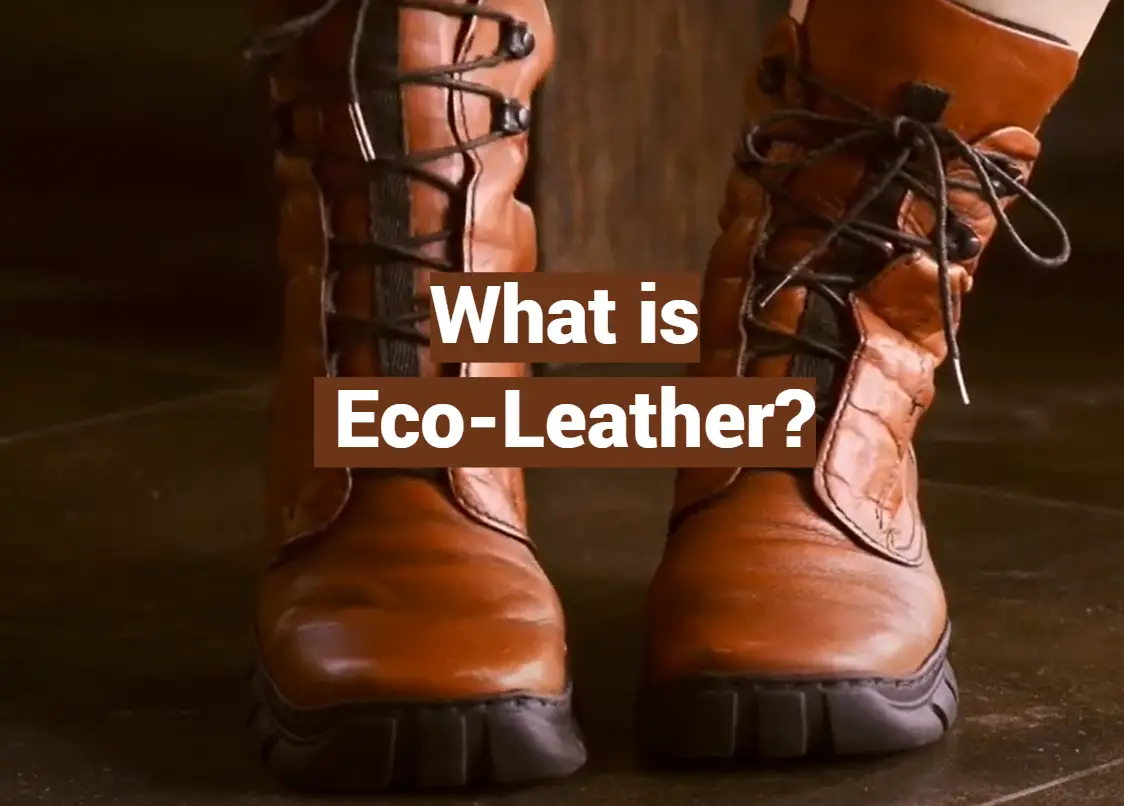
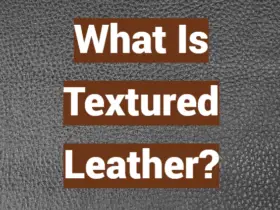




Leave a Reply